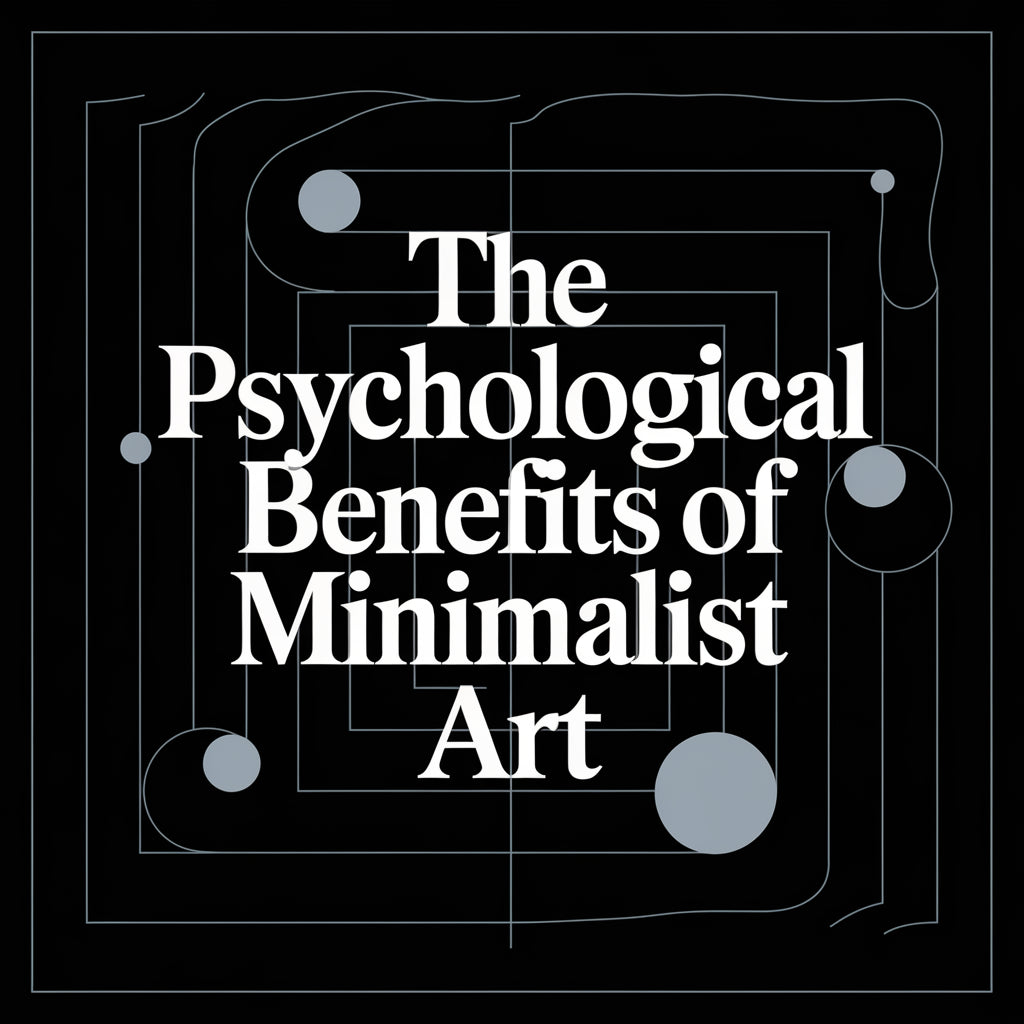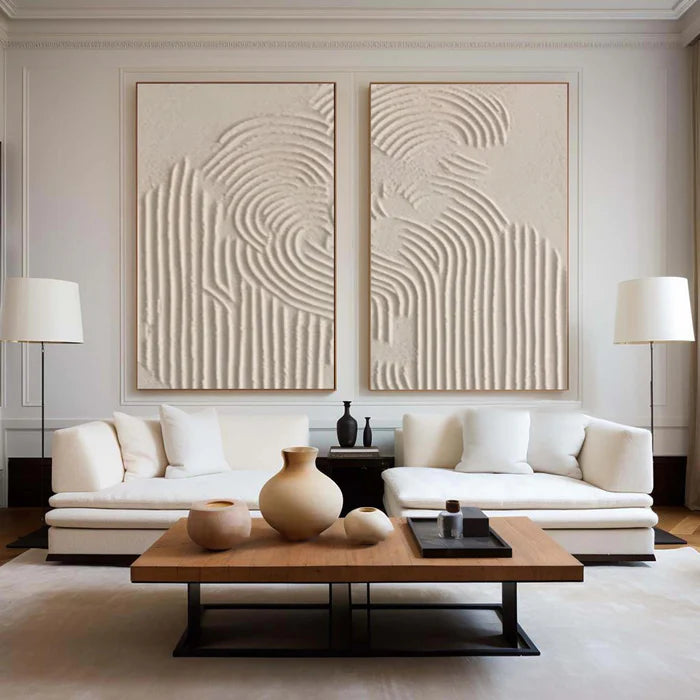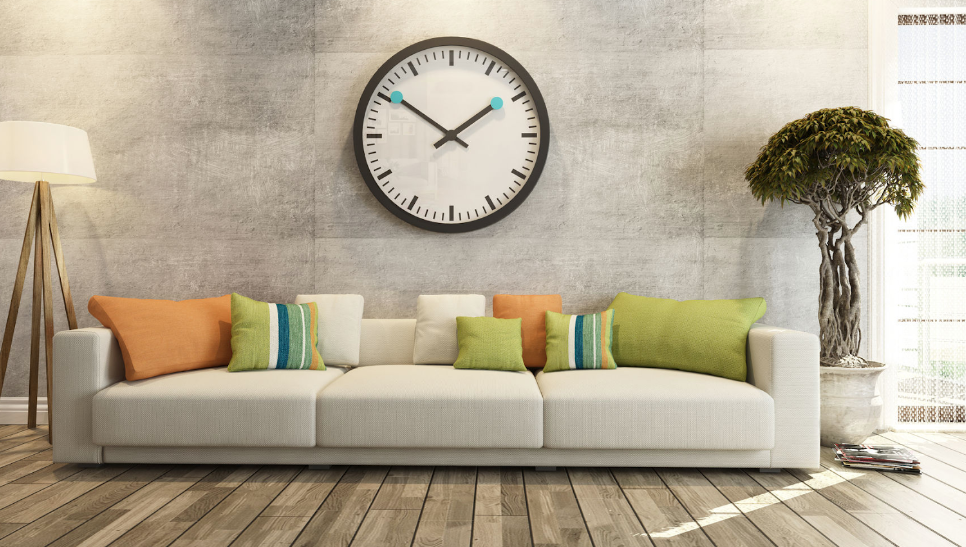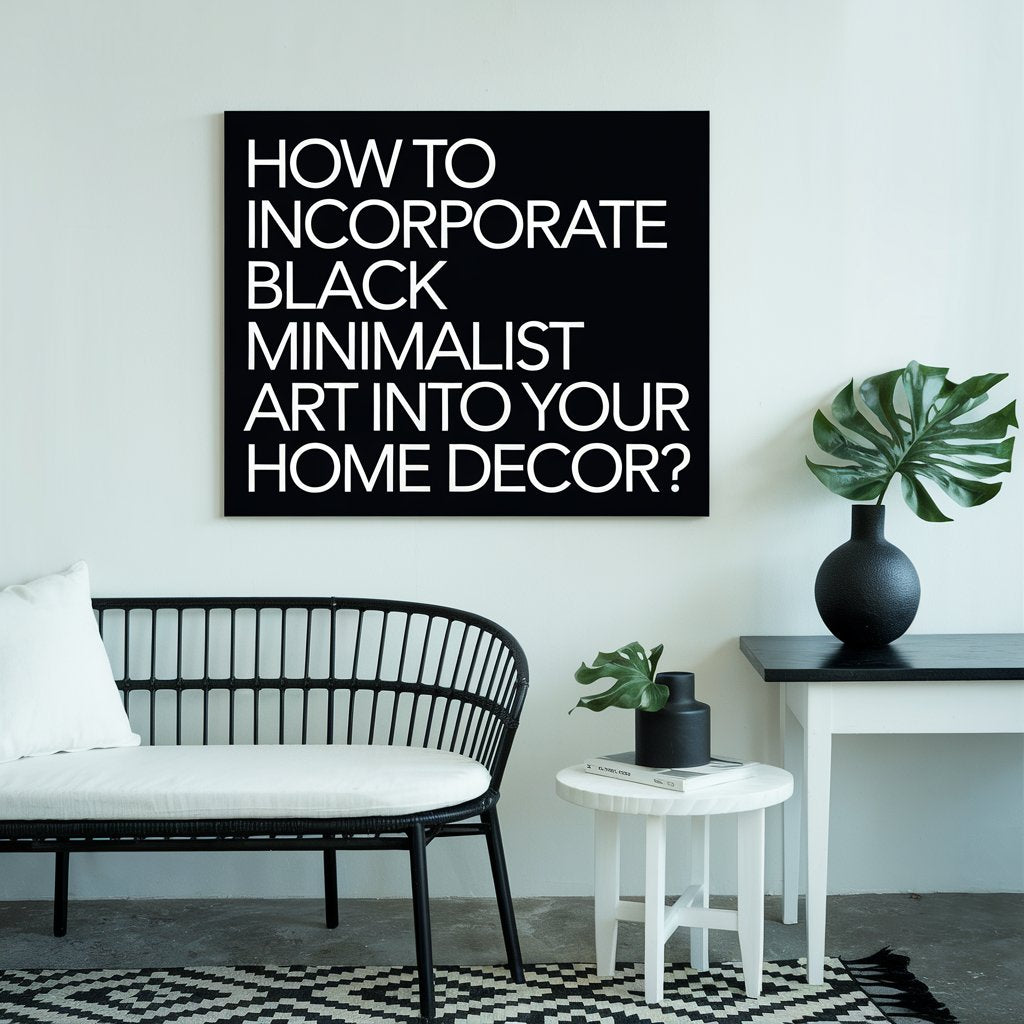
The Psychological Benefits of Minimalist Art
Minimalist art therapy has gained recognition for its profound impact on mental health. This approach features calming art with simple forms and minimal elements. It offers a unique path to emotional and psychological healing.
This type of art emphasizes essential aspects and reduces visual clutter. It creates a tranquil environment that supports mindfulness. The benefits of minimalist art therapy show how this art for mindfulness can enhance mental well-being, reduce stress, and foster personal growth.
Let’s explore The Psychological Benefits of Minimalist Art.
What Are the Psychological Benefits of Minimalist Art?
It offers several psychological benefits. It helps reduce mental clutter and provides a calming effect. Viewers experience less stress when exposed to minimalist art. The simplicity of minimalist art creates a sense of tranquility.
- Minimalist art benefits can improve concentration.
- The lack of detail in the artwork removes distractions, which allows the mind to focus better.
- This focused engagement can enhance mental clarity and decision-making.
- The experience of minimalist art encourages mindfulness. The art’s simplicity invites viewers to be present in the moment.
- This presence can lead to greater self-awareness and a deeper connection with one's thoughts and feelings.
- It also fosters emotional balance.
- It avoids overwhelming the viewer with excessive details, which promotes emotional stability.
- The art’s clean lines and sparse composition can contribute to a peaceful and balanced state of mind.
It is possible to increase one's well-being by incorporating minimalist art into daily life. The art’s simplicity aligns with a stress-free environment. This alignment supports overall mental health and emotional harmony.
How Can Minimalist Art Enhance Mental Well-being?
Minimalist art can enhance mental well-being in several ways. It creates a serene environment. The simplicity of the artwork reduces visual noise. This reduction fosters relaxation and calmness.
Exposure to this type of art promotes mental clarity. The straightforward designs eliminate distractions. Viewers find it easier to focus and think clearly. The art’s clean lines help declutter the mind.
Minimalist art supports emotional balance. The art’s simplicity avoids overwhelming viewers. This balance helps maintain emotional stability and peace. If you engage with minimalist art can encourage mindfulness. The minimalist approach invites present-moment awareness. Viewers connect more deeply with their inner experiences and emotions.
Your mental health can be improved by including minimalist art in your home. The art’s calming presence contributes to a stress-free environment. This environment supports a balanced and harmonious mental state.
In What Ways Does Minimalist Art Reduce Stress?
Minimalist art reduces stress through several key methods. The simplicity of the artwork creates a calming atmosphere. Clean lines and open spaces prevent visual overload. This simplicity helps calm the mind and ease tension.
Minimalist art minimizes distractions. The absence of clutter in the artwork allows for focused attention. This focus reduces feelings of overwhelm and promotes relaxation. The clear and straightforward nature of minimalist art provides mental clarity. Viewers experience less mental clutter. A more organized visual field leads to a more organized mind.
It is calming to engage with minimalist art. The art’s restrained style encourages a slower, more deliberate observation. This process contributes to a sense of tranquility and reduced stress.
Moreover, minimalist art benefits include its ability to create a serene environment, reduce distractions, and provide mental clarity. These factors collectively contribute to a lower stress level and enhanced well-being.
How Does Minimalist Art Contribute to Mental Clarity?

Minimalist art clears the mind through its simplicity. The art's clean lines and limited color palette reduce visual noise. This reduction helps viewers focus on the essentials. The straightforward nature of minimalist art eliminates distractions. Viewers concentrate on the core elements without being overwhelmed. This focus fosters a clearer mental state.
It also encourages intentional observation. The lack of clutter allows viewers to engage deeply with the artwork. This engagement enhances mental clarity and insight. Minimalism also promotes a sense of calm. The art’s restrained approach provides a visual break from complexity. This calm atmosphere supports a more organized and clear mind.
Can Minimalist Art Help in Finding Personal Fulfilment?
Minimalist art guides personal fulfilment through simplicity. Its stripped-down nature allows viewers to reflect on their values. This reflection can deepen self-understanding. The focus on essential elements encourages introspection. Viewers may find meaning that resonates with their personal experiences. This connection fosters satisfaction.
Minimalist art often leads to a feeling of liberation from excess. If you are reducing visual clutter can inspire a desire to simplify life. This alignment with personal values enhances fulfilment.
The contemplative nature of minimalist art promotes self-awareness. As viewers engage with the art, they uncover insights about their desires and goals. This self-awareness leads to a more intentional life. Minimalist art benefits personal fulfilment by encouraging reflection and fostering connection. It promotes liberation and self-awareness.
What Role Does Minimalist Art Play in Improving Focus?
Minimalist art enhances focus through its simplicity. The lack of visual distractions helps viewers concentrate better. This uncluttered approach directs attention to key elements, which reduces mental noise. The clean lines and open spaces in minimalist art create a calming effect. This calm environment supports a clearer mindset. Viewers find it easier to maintain focus and avoid getting overwhelmed.
It also encourages a more intentional viewing experience. Viewers are directed to engage deeply with each component of the art by presenting only the essential elements. This focused engagement can lead to improved concentration in other areas of life.
How Does Minimalist Art Support Emotional Balance?
Minimalist art promotes emotional balance through its simplicity. Clean, uncluttered designs create a sense of calm. The absence of excessive details helps reduce emotional overload.
The use of subtle colors and simple shapes fosters a peaceful atmosphere. This serene environment supports emotional stability. Viewers often experience a reduction in stress and anxiety.
Its art also encourages reflection and introspection. The focus on essential elements invites personal interpretation. This process can lead to a deeper understanding of one's emotions. Minimalist art supports emotional balance by creating a calm environment, which reduces stress, and encourages introspection.
In What Ways Can Minimalist Art Aid in Self-discovery?
Minimalist art aids in self-discovery through its emphasis on simplicity. The clear and uncluttered design invites introspection. If you focus on fundamental elements, viewers confront their inner thoughts and feelings. The reduction of visual noise allows for deeper personal reflection. This environment fosters a space for exploring one's identity and values. The stark simplicity often reveals underlying emotions and insights.
Minimalist art encourages viewers to project their own experiences onto the artwork. This personal interaction can uncover hidden aspects of oneself. Minimal forms promote heightened self-awareness. Minimalist art supports self-discovery by offering a simple yet profound space for introspection and reflection.
How Can Embracing Minimalist Art Lead to Greater Happiness?
Its focus on simplicity can lead to greater happiness if you embrace minimalist art. The clean and uncluttered aesthetic reduces visual stress. A simplified environment often brings a sense of calm and peace. Minimalist art encourages a focus on essential elements, which can lead to a clearer mind. This clarity fosters a more positive outlook on life. The absence of excess helps in appreciating the present moment.
The art form also promotes mindfulness and intentional living. This practice can increase overall satisfaction with art and mental health. So—Minimalism helps in creating a serene and harmonious space.
Is Minimalist Art a Tool for Achieving Inner Peace?
Minimalist art serves as a powerful tool for achieving inner peace. The simple and clean lines reduce visual clutter, creating a calming effect. This art form helps in focusing attention on what truly matters.
Minimalist art encourages a serene environment that can soothe the mind. The reduction of excess fosters a sense of tranquility. This peace extends beyond the artwork, which influences overall well-being.
The art form promotes mindfulness by highlighting essential elements. This approach aids in finding balance and harmony within oneself. It can lead to a more centred and peaceful state of mind. Minimalist art supports inner peace through its simplicity, ability to reduce visual stress, and promotion of mindfulness.
Conclusion
Minimalist art therapy offers more than aesthetic appeal. Its simplicity and clarity provide numerous psychological benefits. Minimalist art enhances mental well-being and emotional balance. It supports personal fulfilment, mental clarity, and focus.
It also aids in stress reduction and self-discovery. The use of minimalist art in your daily life can lead to greater happiness and inner peace. The transformative power of minimalist art therapy lies in its ability to create calm and inspire deeper understanding.
Discover the transformative power of minimalist art therapy today with Vinchy Art. Embrace simplicity, and enhance your mental well-being. You should find inner peace through art. Start your journey now.
FAQs
How does minimalist art reduce stress and anxiety?
Clean and simple, all the minimalist art tends to feature lines or more empty space without hundreds of objects. The elements can promote a calming and organized feeling, which helps alleviate stress and anxiety. Through this cut of things that are vain,minimalist art makes it easier for us to concentrate on what really matters, which in turn helps and relaxes the mind. Significantly reduced visual noise can potentially lower the cognitive load on our brains making minimalist art useful for coping with stress-world overfilled by various stimulants.
Can minimalist art improve focus and productivity?
Yes, Minimalist art can indeed increase focus and productivity. Minimalist art by not having distractions keeps the mind opened for clarity. The artist's intention is for people to focus on the task at hand, without being overwhelmed by a lot of visual information. Keeping your eyes off unnecessary distractions, This makes the visuals in work spaces way easier to focus on.
Why is minimalist art often used in therapeutic settings?
The minimalist style of art is often used in therapeutic settings because it has a calming, meditative quality and keeps one grounded. The simplicity and harmony in minimalistic designs incite peace, calmness and breath of fresh air in a space that is designed for healing or reflection. Minimalist art is frequently used by therapists and mental health professionals to design spaces for feelings of wellness, relaxation & ability which has shown the potential to help clients get into a state suitable for therapy.



